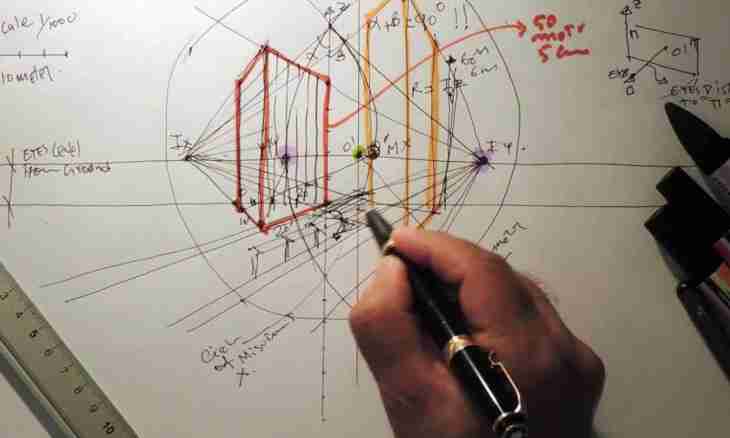How to represent volume bodies on the paper plane? For this purpose use axonometry methods (from the Greek words "axis" — and "I measure" axon — metreo) or projections. It is the simplest to show this principle on the example of a cube.
It is required to you
- - sheet of paper,
- - pencil,
- - ruler,
- - protractor.
Instruction
1. The axonometry can be executed both in a rectangular projection, and in oblique-angled. For a start construct a cube in a rectangular isometric projection, that is projection happens perpendicular to the plane of a projection and scale on each axis is identical. Usually, for simplicity the distortion coefficient is accepted equal 1 here. Draw three axes of coordinates. For this purpose by means of a ruler and a pencil draw the vertical line approximately from the middle of a leaf up. By means of a protractor from this line postpone a corner in 120 degrees in both parties and draw the respective lines. The axis of coordinates in space turned out. Now on these axes postpone identical pieces. From the received points draw the lines parallel to an axis of coordinates. For this purpose again it is necessary to postpone from each point on 120 degrees in both parties. And on each beam by means of a ruler postpone a piece of the same size, as earlier. Now connect the turned-out points parallel lines. The cube in a rectangular isometric projection turned out. It still carries the name of orthogonal.
2. To receive a rectangular diametrichesky projection, keep the sizes in on any two axes, and on remained — distort in the necessary or any degree. Actually the cube turns into a rectangular parallelepiped. Except rectangular there are oblique-angled projections at which projection happens under any other corner to the plane, except direct. Distinguish a frontal isometric projection, a frontal dimetric and horizontal isometric projection.
3. To construct a frontal oblique-angled projection, postpone the following corners between axes: between vertical and horizontal — 90 degrees, and the third axis incline rather vertical by 135 degrees. Besides, also other deviations are allowed — by 120 or 150 degrees. After that construct projections to similarly previous case, but only in a frontal projection keep proportions. For a horizontal projection of a proportion keep in the horizontal plane.

